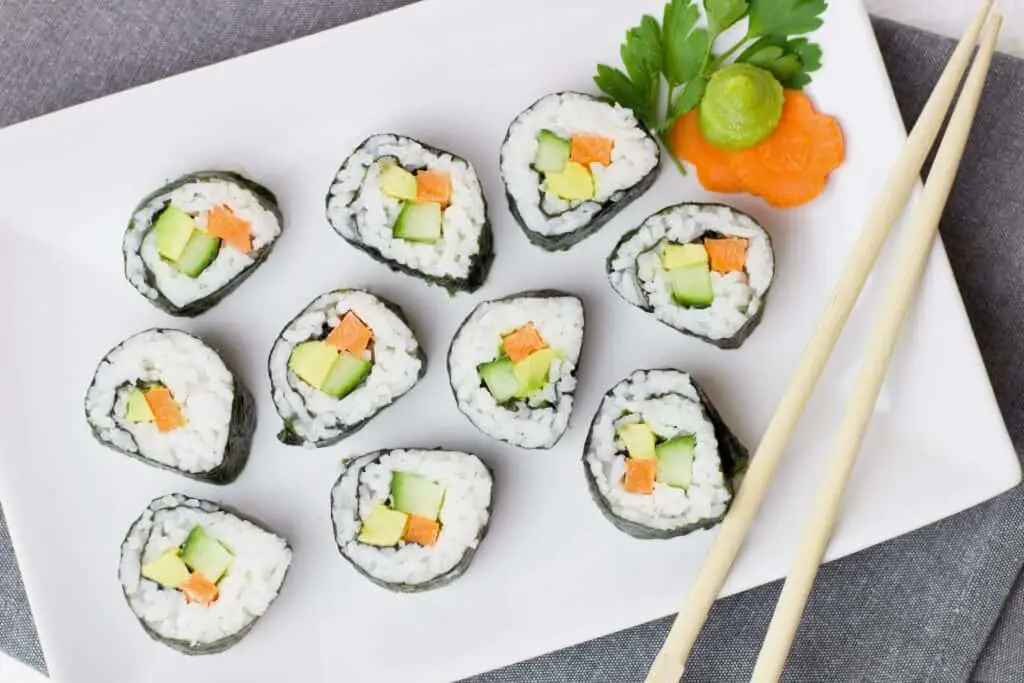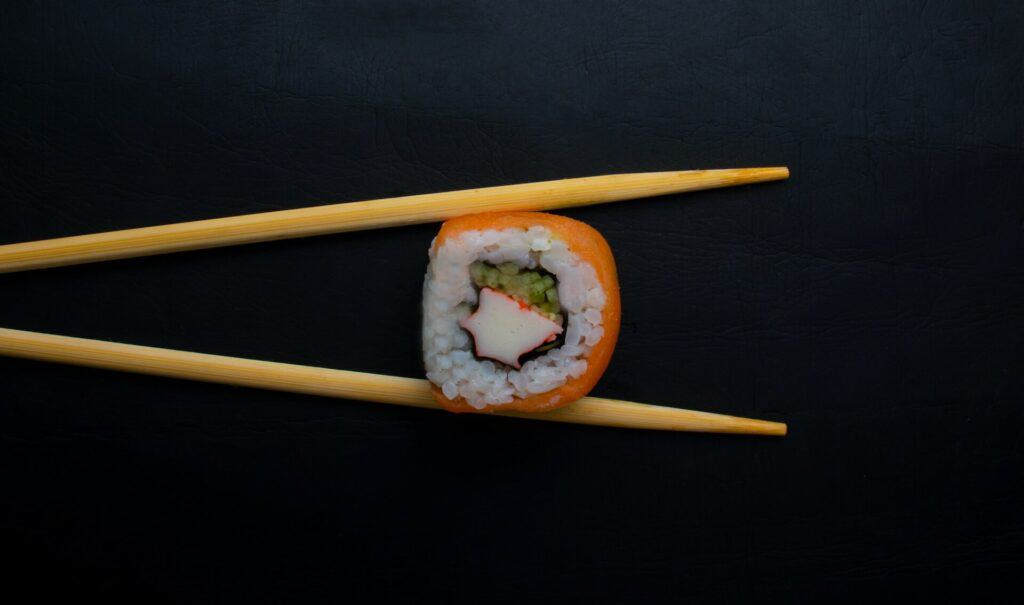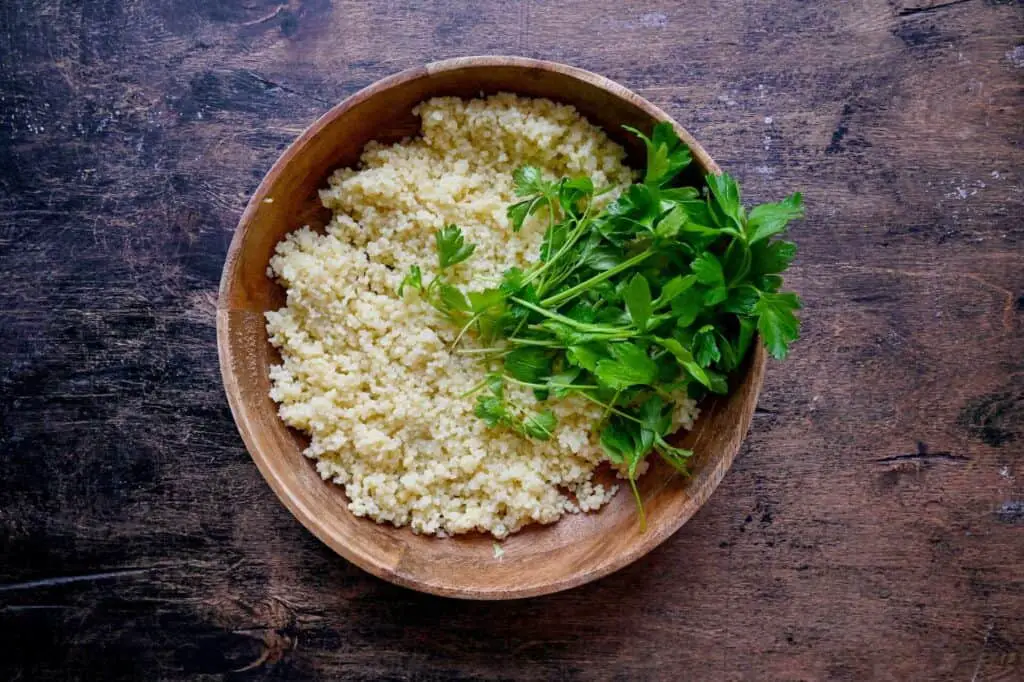There are more than 100,000 varieties of rice worldwide, but not all of them are suitable for making sushi. So, can you make sushi with basmati rice?
Yes, you can make sushi with long-grain basmati rice, but using short or middle-grain rice kinds is always better. Cooked basmati rice is dryer and less sticky, making molding much more difficult. Even if you succeed in making presentable sushi rolls, their texture won’t be the same as with traditional Japanese rice.


However, some methods can potentially help you with this task. If you want to prepare perfect sushi, with or without basmati, make sure to follow the tips below.
You Can Make Sushi With Basmati Rice – But Should You?
Basmati and jasmine belong to the family of rice with long grains, but it’s not their size that makes them unsuitable for sushi rolls. Unlike small and medium-sized rice that are high in amylopectin (and best for sushi), basmati is high in amylose starch – and it affects the texture of cooked rice.
Cooked basmati is much drier and firmer, with well-defined grains that don’t clump together and are not sticky enough. Keep in mind that the stickiness of the rice is important when making this Japanese dish since it’s the ingredient that holds together all others.
On the other hand, short and medium-grain rice types turn soft and sticky when cooked and become easy to mold and clump.
However, keep in mind that basmati wouldn’t change the taste of the dish itself. It is physically possible to prepare sushi with it, and it would still taste amazing – if you succeed, of course. But even then, remember that texture won’t be the one you’re used to.
Still, the crumbling and dryness of it could (and probably will) negatively affect this sushi-eating experience. Therefore, to answer the initial question – using basmati to prepare sushi is possible, but it doesn’t mean you should do it.
What Can You Do to Make Basmati Rice Stickier?
What if, for some reason, using basmati when making these rolls is necessary? To improve the possibility of success, you must find a way to make this non-sticky rice stickier.
Remember not to rinse the grains. When preparing rice of any kind, it is common to rinse it before cooking it. The main purpose of it is to remove starch from the surface of grains before you cook them. However, that extra starch can be beneficial in this case and make basmati stickier than usual.
You can also try adding flour or scratch, but I can’t guarantee that it will work or that it won’t change the taste. I’ve never tried it, but it’s one of the usual culinary practices in these situations.
Also, keep in mind that seasoning will also help the mix hold together better, so you might want to try adding some rice vinegar, salt, and sugar.
Types of Sushi in Which Basmati May (or May Not) Work
How do you know that you’ve succeeded in getting basmati stickier? After squeezing the rice with a bit of pressure, it must hold together and stay in the newly made shape. If it does, it’s time to try and prepare sushi.
Remember that there are different kinds of dishes that are considered sushi dishes. Try making:
- Maki – when talking about sushi, we usually mean maki (norimaki), where ingredients are rolled into a nori seaweed sheet,
- Uramaki – holds the same ingredients as maki, but with rice on and nori swiping places so that rice is on the exterior,
- Nigiri – seafood or egg on top of the elongated crumple of rice,
- Chirashi – sushi that is served in a bowl instead of rolls.
So, in which cases can you use basmati? Chirashi is the most obvious choice since it’s all about the taste of sushi, not the rolling process. You can also try making maki if you don’t mind a different mouthfeel than what you’re accustomed to.
Uramaki, and especially nigiri, would be the hardest to prepare and the most difficult to mold when you’re using basmati.

Which Rice Should You Use When Trying Out Sushi Recipes?
Japanese short-grain sushi rice is traditionally used for making sushi, so you will do no wrong if you decide to cook these grains. Additionally, you can look for medium-grain California or Calrose white rice.
As long as you know the difference between white rice and long-grain kinds, such as basmati or jasmine, you’re fine.
But what about brown rice? Some people prefer using this kind of rice or are on a special diet. In that case, can brown rice be used for making this Japanese dish?
The answer is yes, you can cook brown rice for sushi, but it will change the texture (similarly to basmati, since it is also less sticky than white). If you wish to prepare brown rice sushi rolls, ensure to follow the tips I mentioned above. Additionally, it’s important to remember that brown rice doesn’t have the same taste as white one.
If you want to compare nutrition facts when it comes to white and brown rice, take a look at the table below:
| Type | White | Brown |
| Calories | 204 | 238 |
| Carbohydrates | 44.2g | 49.6g |
| Sugar | 0.08g | 0.47g |
| Fat | 0.44g | 1.87g |
| Fiber | 0.63g | 3.12g |
| Protein | 4.22g | 5.32g |
| Sodium | 387 mg | 202 mg |
Recipes With Basmati Rice As One Of The Ingredients
So, we concluded that basmati is not the best choice for making sushi. But which dishes can’t go without it? Since it’s grown in Nepal, India, and Pakistan, it is a crucial ingredient for many dishes coming from that area of the world, such as:
- Kale Chane Ki Biryani,
- Payesh,
- Achari Murgh with Desi Ghee Khichdi,
- Apple Kheer, and the like.
Therefore, if you still think about how to use basmati, it’s always better to choose dishes inherent to the Indian subcontinent to go with sushi and traditional Japanese cuisine.

Don’t Test Your Luck – Stick With Ingredients Mentioned in the Recipe
As you can see, there is a reason why many chefs insist you do not use long-grain basmati when making sushi rolls. Don’t risk lousy food presentation, changed sushi texture, and bad sushi-making experience – use basmati for other equally delicious dishes in which it is an irreplaceable ingredient.